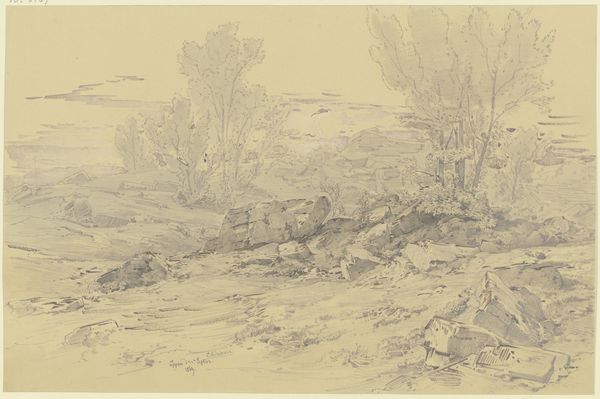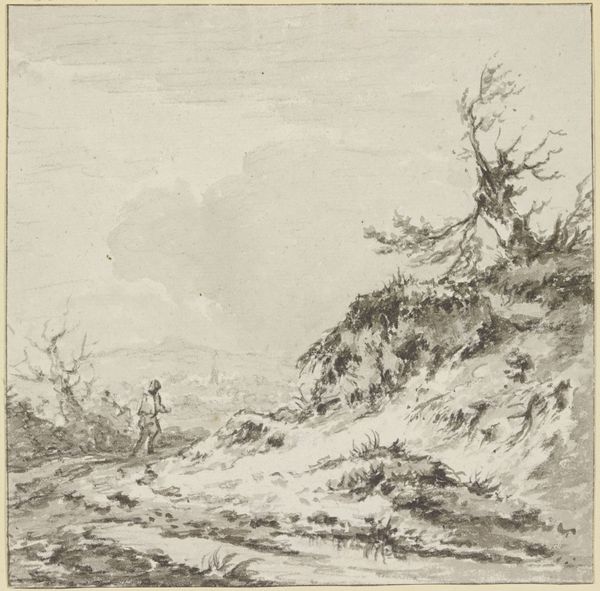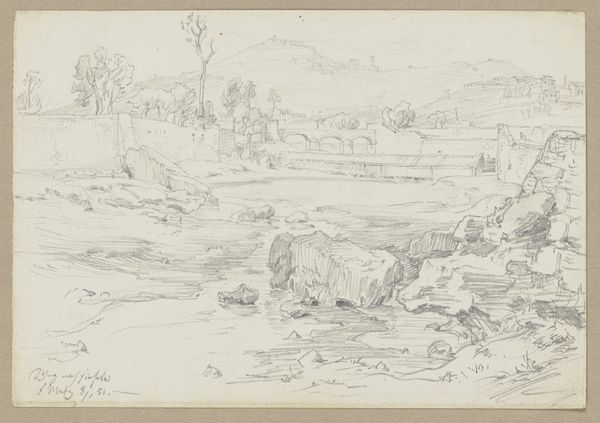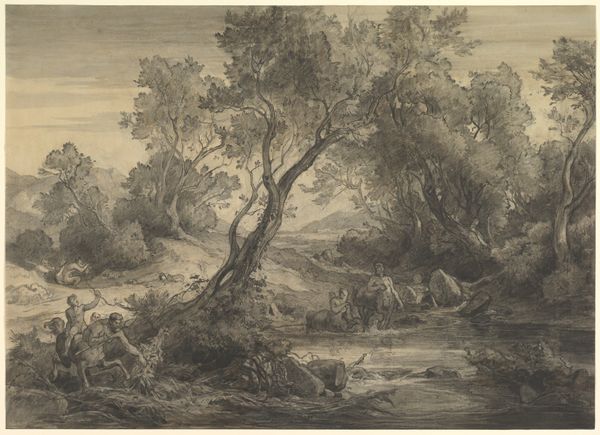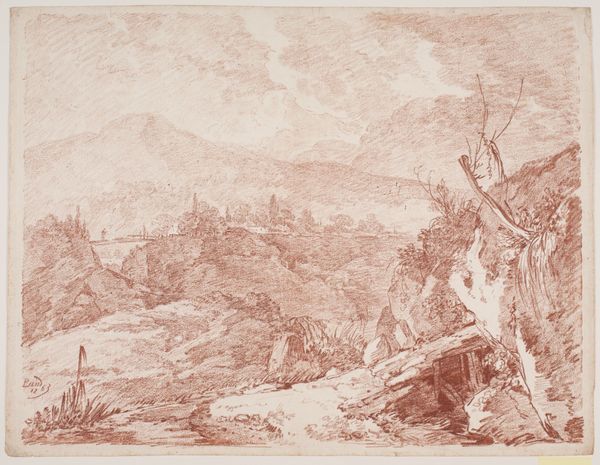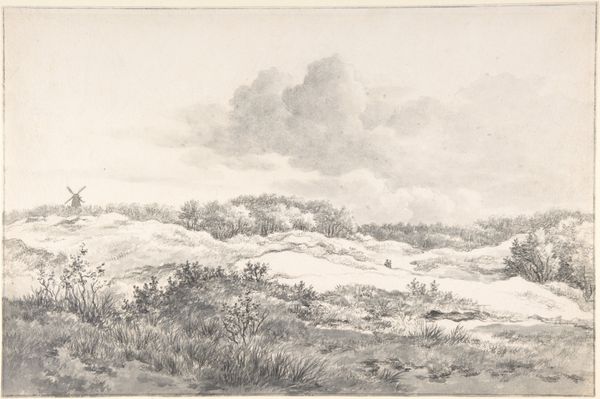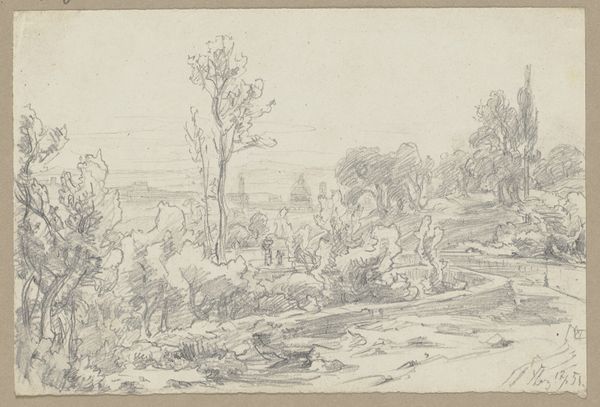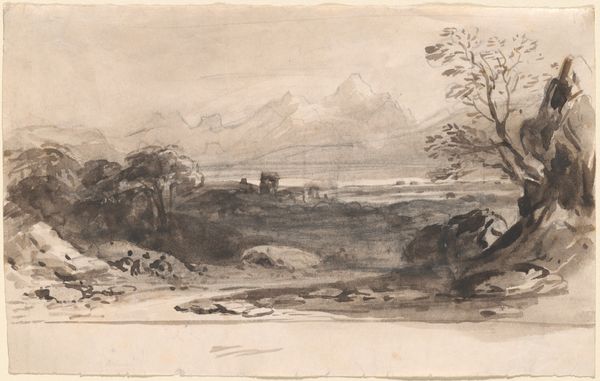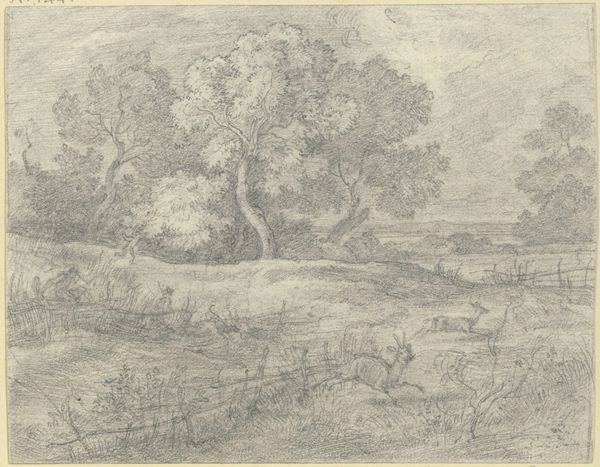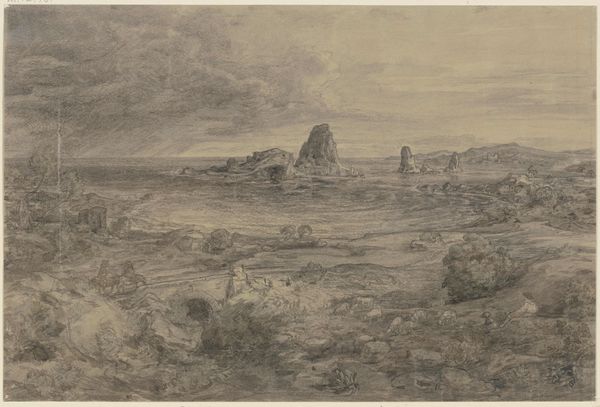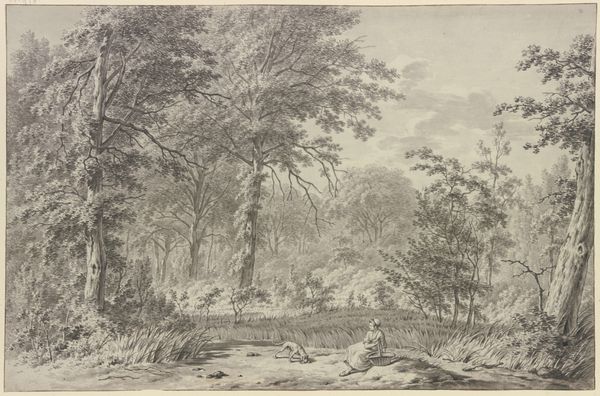
drawing, watercolor, ink, charcoal
#
drawing
#
baroque
#
ink painting
#
landscape
#
charcoal drawing
#
watercolor
#
ink
#
line
#
charcoal
#
watercolor
Dimensions: height 181 mm, width 234 mm
Copyright: Rijks Museum: Open Domain
Curator: Standing before us is Valentijn Klotz’s “Erosion in a Hilly Landscape,” believed to have been created sometime between 1660 and 1712. It’s rendered in ink, charcoal, and watercolor. Editor: It immediately strikes me as melancholic. The limited color palette and stark contrasts evoke a sense of loss, almost as if we’re witnessing the aftermath of something. Curator: That's an interesting observation. It invites us to consider how landscapes were viewed during that period. They were often reflections of societal values and even political power. Perhaps Klotz is subtly commenting on the instability or change happening in his world. Editor: Definitely. Looking closer, the lines defining the eroded forms feel almost violent. It reminds me of the philosophical concept of nature's indifference to human existence. Are we meant to see beauty, or a warning? Is this the earth’s natural progression or a visual metaphor for cultural decline? Curator: The use of ink and charcoal certainly heightens the dramatic effect. It also raises a point about accessibility. Landscape art like this was gaining traction among a burgeoning middle class keen to see nature through the eyes of artists who exhibited at the increasingly important galleries. Editor: That's true, the consumption of landscape art definitely holds an interesting duality; finding aesthetic satisfaction while ignoring what is presented. However, these landscapes are rarely void of figures, domestic animals or, architecture, which humanizes the depiction—an important socio-economic statement that highlights how nature, even when represented in its "wildest" form, has long become "ours." Curator: Right, considering this, the erosion takes on a different weight. Whose land is this? How do they engage with it, or how are they barred from engaging with it, and to what effect. What do they consume from it? What does the absence mean? Editor: I am curious to know the land’s traditional inhabitants and the type of relationship that existed. Valentijn Klotz lived through a series of societal shifts in Europe. In addition to war and colonialization, scientific discoveries would begin to shake society to its very core, challenging people to come to terms with the notion that their lands were in constant states of change and upheaval. Curator: So, maybe it's about humanity reckoning with the immense power of geological processes, its effect on us. Klotz invites a dialogue, a space to project our understanding onto an evolving landscape, literally and figuratively. Editor: A landscape ripe with ecological and societal implication then. Curator: Precisely.
Comments
No comments
Be the first to comment and join the conversation on the ultimate creative platform.
